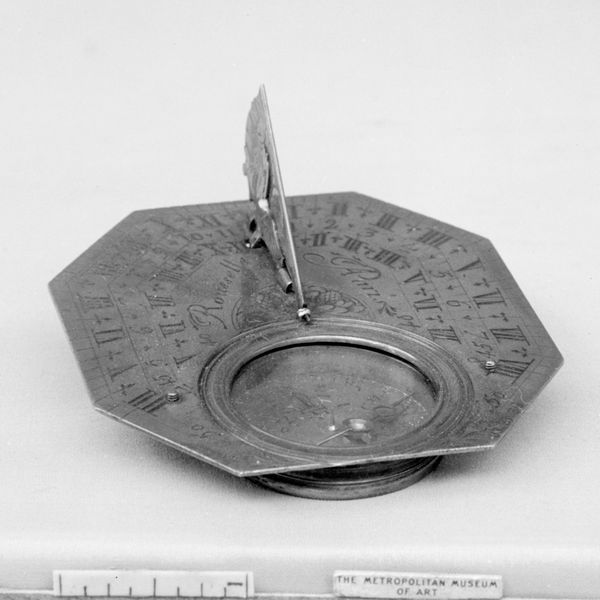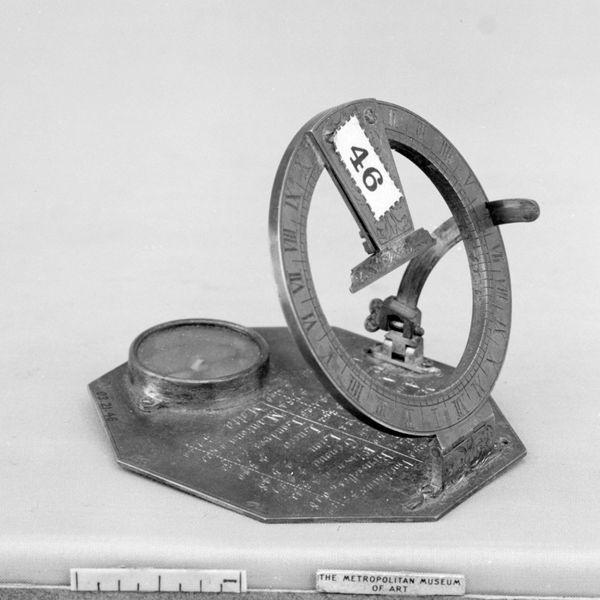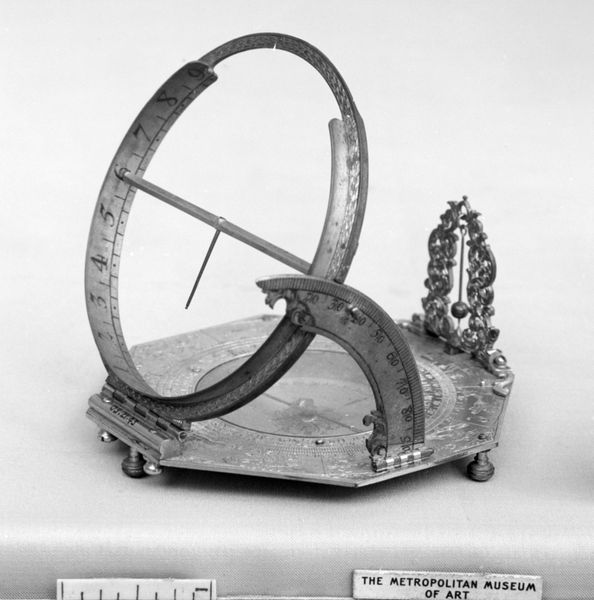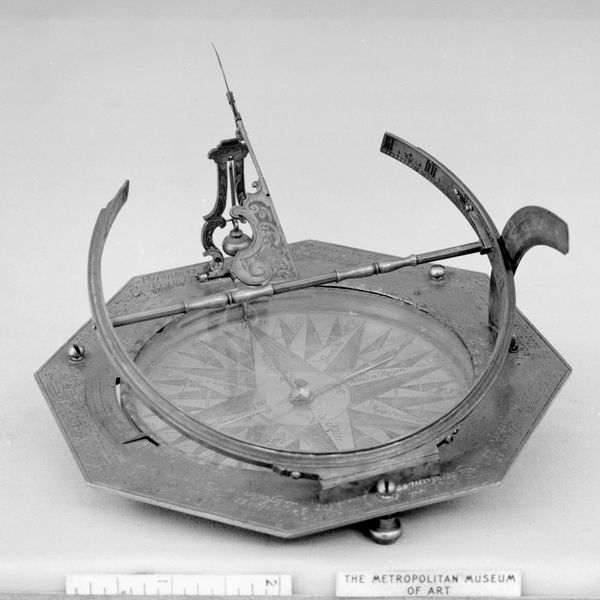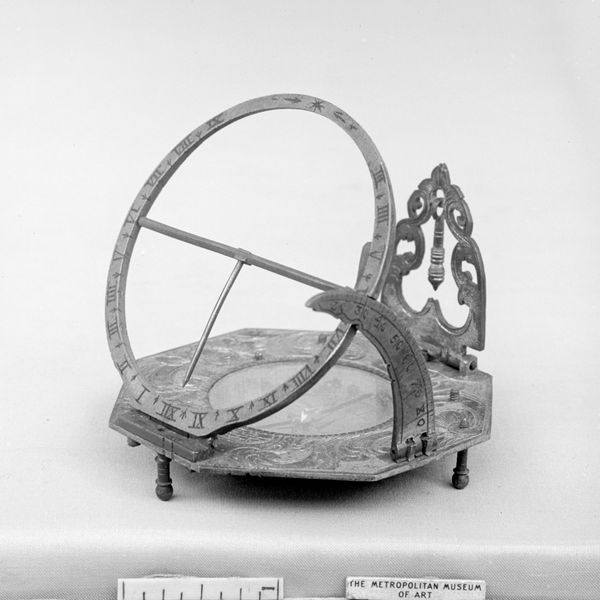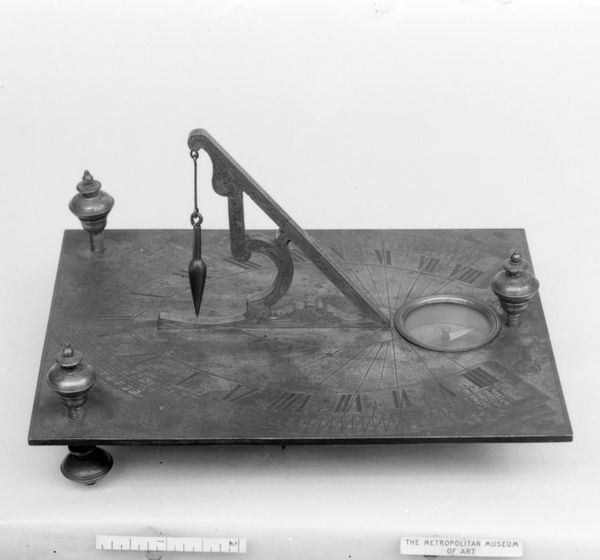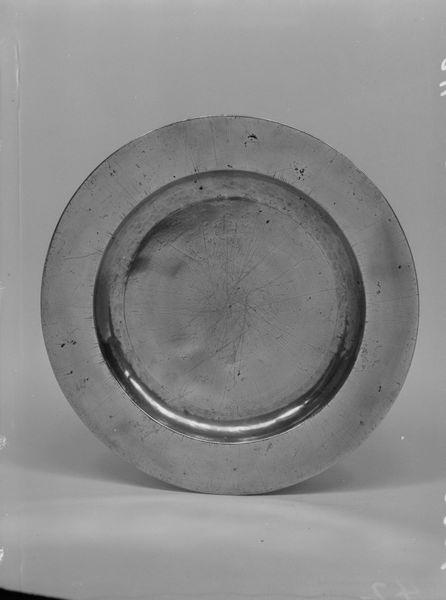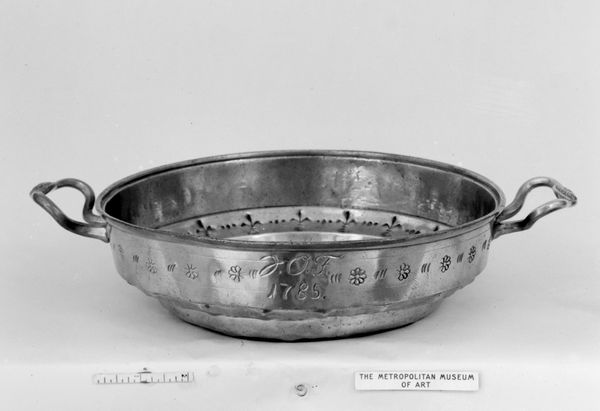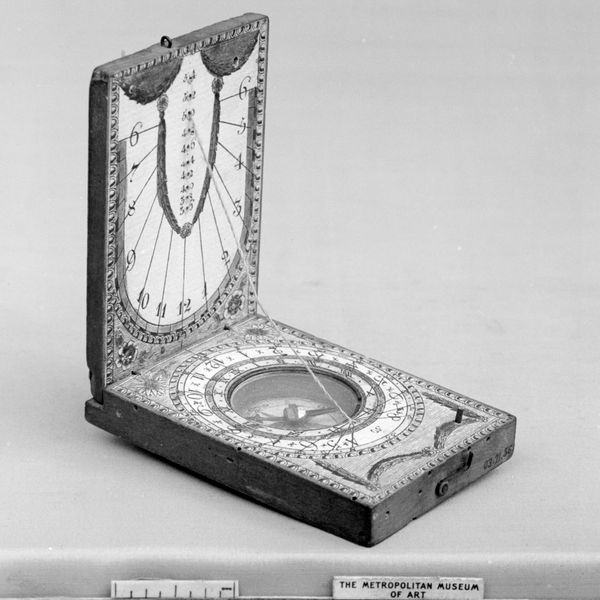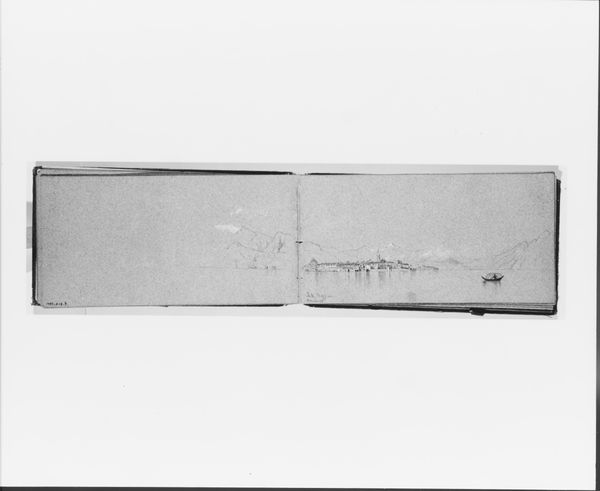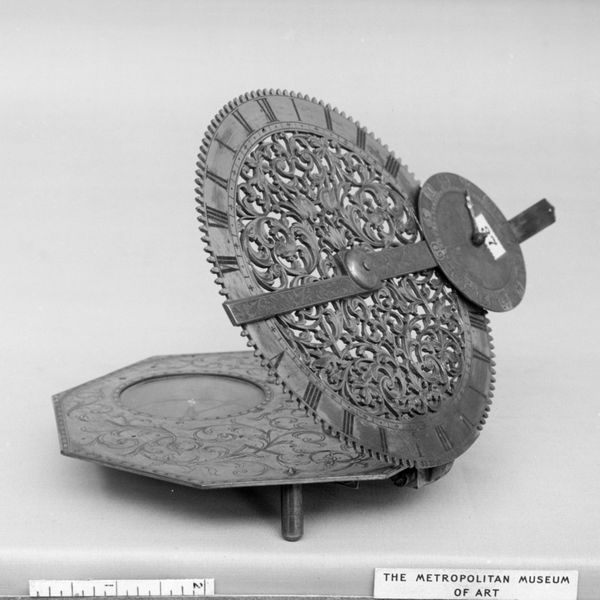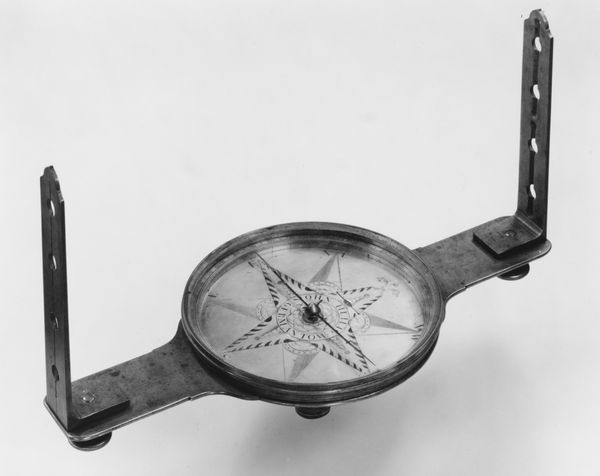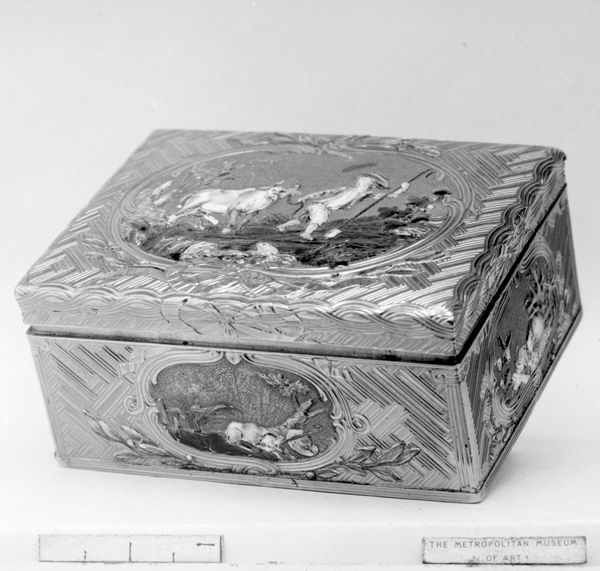
brass, metal, sculpture
#
brass
#
baroque
#
metal
#
sculpture
#
geometric
#
sculpture
Dimensions: 2-7/8 x 2-1/2 in. (7.3 x 6.4 cm)
Copyright: Public Domain
Editor: We're looking at a "Portable Horizontal Sundial," made between 1735 and 1757 by Claude Langlois. It's made of brass, which gives it a delicate, almost precious quality, don’t you think? With its complex geometric form, the object looks both scientific and artistic. How do you interpret this work, its practical function versus its beauty? Curator: It’s funny, isn't it, how our obsession with marking time yields these tiny universes! Langlois has crafted something both intensely precise and wonderfully fanciful. For me, it speaks of that Baroque dance between science and aesthetics – a little world of rational measurement dressed up in the frills of artistic expression. Look closely—don't you almost feel like you're holding the secrets of the cosmos in the palm of your hand? Does it give you the feeling that knowledge is precious? Editor: I love that—a "tiny universe." So it's not *just* a sundial; it's a statement? Curator: Absolutely! It’s about power, wealth, knowledge… the sort of knowing wink that says, "I understand the world, and I can even hold Time captive!" It’s also delightfully impractical in our modern world of constant connectivity. You could imagine someone today crafting a sundial, less about function, and more about... what, contemplation maybe? A longing for the slow rhythm of things. Editor: That’s a lovely idea – a sundial as a tool for contemplation! I hadn't considered the Baroque love of ornamentation in something seemingly scientific. Thanks for showing me how this reflects the cultural context of the period! Curator: My pleasure. Sometimes the smallest objects contain the biggest ideas, and reveal the most profound stories.
Comments
No comments
Be the first to comment and join the conversation on the ultimate creative platform.
